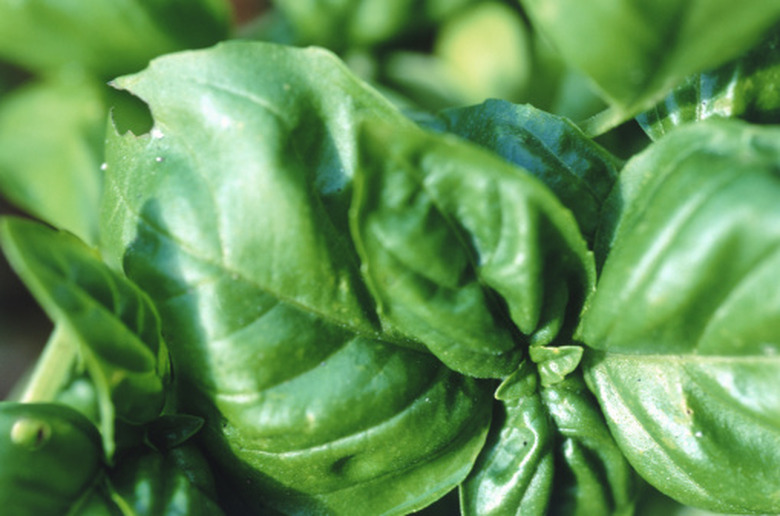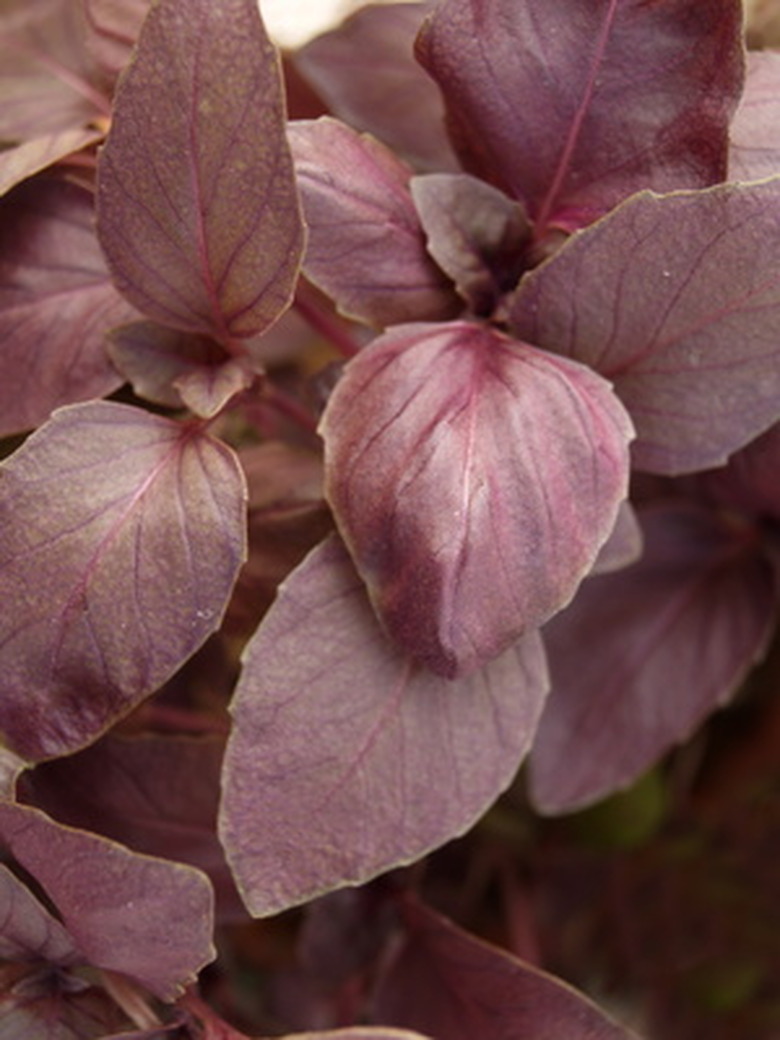Characteristics Of A Basil Plant
Although popular in Italian and Southeast Asian cookery, basil or sweet basil (Ocimum basilicum) is originally from India. It is an annual herb with aromatic leaves that is closely related to the mints (Lamiaceae). Basil's aromatic leaves, with hints of cloves and pepper, are widely used as a fresh salad ingredient and in soups and stews.
Plant Description
Sweet basil grows as frost-tender annual shrubs up to 20 inches high. The shiny, oval leaves can be 4 inches long, and the stems are tough and square in profile. Basil plants produce spikes of white flowers followed by small, black seeds.
Cultivars
Genovese basil (O. b. var. genovese) is a variety of sweet basil traditionally used to make pesto. Thai basil (O. b. var. thyriflorum) has large, pointed leaves and purple, branched stems up to 36 inches high. It should not be confused with Thai holy basil (Ocimum tenuiflorum), a separate but closely related basil species. Lemon basil (O. b. var. citriodorum) has fine leaves and a citrus odor.
Propagation
Basil seed germinates at temperatures above 65 degrees Fahrenheit. Sow seed indoors six to eight weeks before the last frost. Cover seed with 1/4 inch of soil. Seedlings are ready to transplant once they are 6 inches tall and temperatures have risen above 50 degrees F.
Cultivation
Plant basil seedlings outdoors once all chances of frost have passed. Basil plants thrive in sunny conditions and rich but well-drained soil and need abundant water, especially during the summer. Leave about 2 feet between plants and 3 feet between rows. Fertilize at planting using 3 pounds of low nitrogen ( 5-10-10 ) granular fertilizer per 100 square feet. Apply a 3-inch mulch or pine needles or leaf litter around basil plants to keep the soil moist.
Culinary Uses
Sweet basil has traditionally been used alongside tomato in Italian recipes, but its peppery flavor also goes with vegetables such as eggplants and zucchini. Fresh basil leaves are used in tomato salads and are a vital ingredient in pesto sauce. Basil is best added to cooked dishes at the last moment, as its flavor dissipates with heat.

